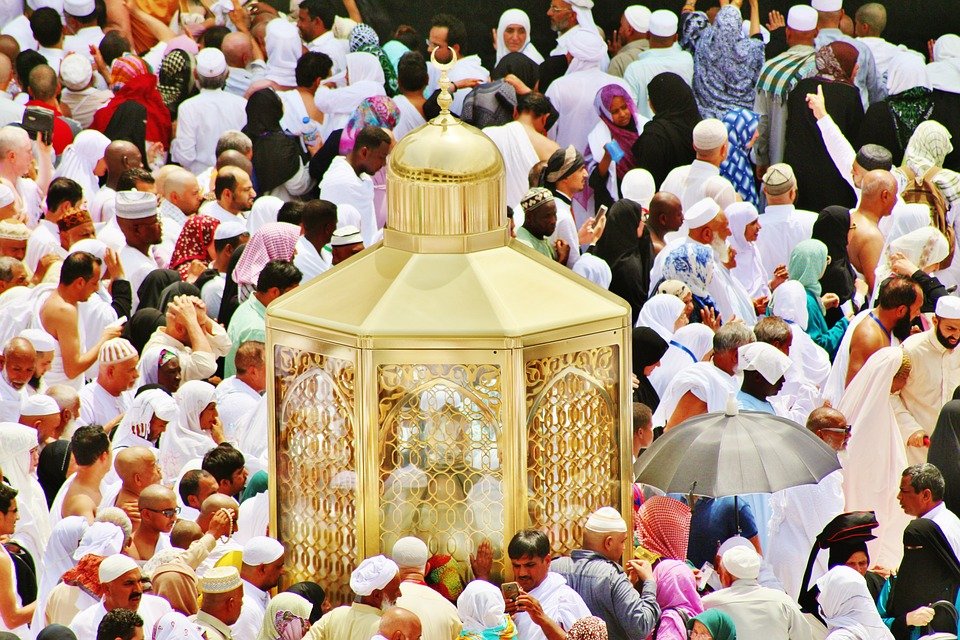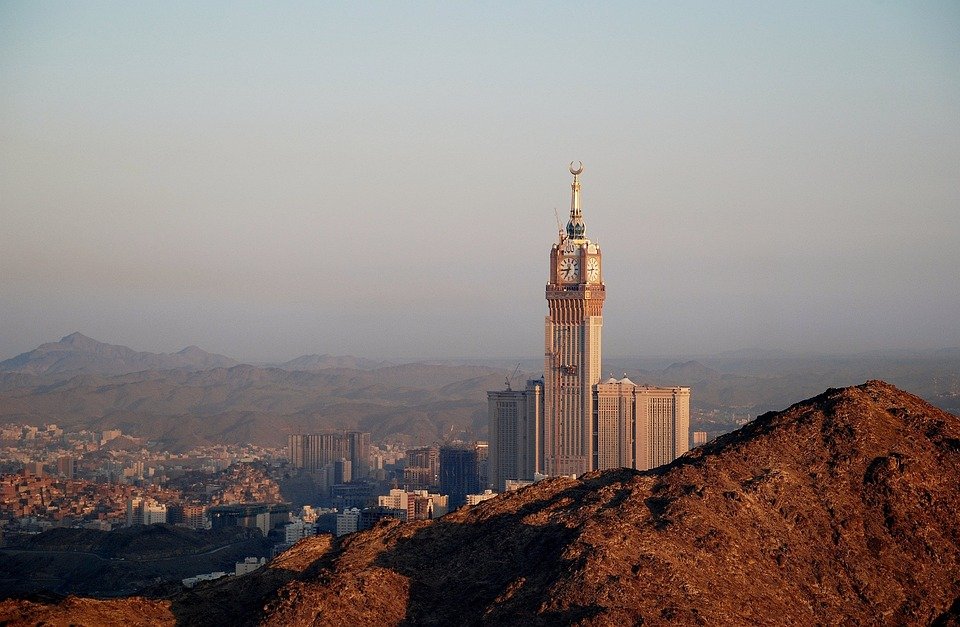You are here to read: Hajj Was Stopped: Reasons Behind the Historic Suspension – A Thoughtfully Written Guide Offering Spiritual Wisdom and Travel Advice for Every Pilgrim who is going on holy journey of Hajj or Umrah.
When Hajj was stopped marks a significant moment in Islamic history that has shaped the pilgrimage experience for millions. In this article, I will guide you through the historical context and reasons why Hajj was temporarily halted. By exploring this topic, you will gain a deeper understanding of its implications and relevance today. I promise that you will find a comprehensive overview here, making this article a valuable resource for anyone interested in the profound narratives surrounding “when Hajj was stopped”.
In my opinion, understanding when Hajj was stopped is crucial for appreciating the significance of this pilgrimage in Islam. The suspension of Hajj has profound implications, reflecting on the resilience and faith of the Muslim community throughout history. We at Airlinkhajjandumrah.com, with nine years of experience in the Umrah and Makkah, Madinah travel field, offer our expertise to provide insights into “Hajj Was Stopped: Reasons Behind the Historic Suspension.” I believe that by sharing this information, we can foster a greater appreciation for the spiritual dedication of Muslims around the world.
Understanding Hajj and Its Importance
Hajj is one of the most sacred moments for Muslims around the globe. Each year, millions of faithful visit the holy cities of Makkah and Madinah to perform this significant pilgrimage. The experience is not just about rituals; it is a way for believers to reconnect with their faith and community. During the days of Hajj, people wear simple white garments and stand together in prayer. This unity represents equality and devotion.
In my opinion, one of the most beautiful aspects of Hajj is how it brings people from diverse backgrounds together. It doesn’t matter where someone comes from or what language they speak; the shared experience of worship makes everyone feel like family. From the towering Kaaba to the peaceful surroundings of Madinah, each part of the pilgrimage offers a moment for reflection, gratitude, and deepening faith.
The Reasons for Suspension
The historic suspension of Hajj is a topic that sparks curiosity and concern. Several factors can lead to such a significant decision, primarily health and safety concerns. For instance, during times of global pandemics, authorities often prioritize the well-being of participants over tradition. COVID-19’s impact demonstrated how a health crisis could halt gatherings and require limits on large crowds, including those participating in Hajj.
Moreover, political unrest or natural disasters can also lead to the suspension of this pilgrimage. In my view, the global community must prioritize the safety of individuals during such challenging times. The authorities responsible for organizing Hajj understand this, and they take necessary steps to ensure that participants are not put in harm’s way.
The Historical Context of Suspensions
Looking back in history, we find that Hajj has been suspended at different times. For instance, during the Black Death in the 14th century, the pilgrimage was momentarily halted due to the rampant spread of disease. This historical context helps us understand the importance of addressing health crises seriously. In my opinion, recognizing these past events can shed light on how societies adapt and prioritize health.
You're at the middle of this awesome post at AirlinkHajjandUmrah.com through: Hajj Was Stopped: Reasons Behind the Historic Suspension. Keep reading, it gets better!
The cyclical nature of challenges provides valuable insights. Many lessons emerge from historical suspensions, especially regarding faith and perseverance. People have always found ways to maintain their spiritual connection, even from afar. I think these lessons remind us that faith transcends physical locations—it lives in our hearts.
The Impact of Suspension on Pilgrims
The temporary halt of Hajj deeply affects millions of pilgrims who look forward to the event each year. For many, it is not just a spiritual obligation but also a life-changing experience. The disappointment felt by those who cannot attend is palpable. It’s a chance to reflect on personal faith and commitment to the beliefs that unite them.
In my experience, the emotional toll can linger long after the news of a suspension. Some might feel an overwhelming sense of loss, while others may find new ways to engage with their faith. The moments missed can foster a more profound appreciation for the pilgrimage, encouraging people to strengthen their spiritual practices in daily life when they can’t participate in Hajj.
The Role of Technology in Staying Connected
Even during a suspension, technology plays a vital role in keeping the spirit of Hajj alive. Many organizations and leaders turn to online platforms to provide virtual resources that help guide those practicing their faith from home. It has become increasingly common for mosques to offer online lectures and group prayers, allowing people to create a communal atmosphere, even when physically apart.
In my view, these digital advancements enhance our ability to connect and worship without borders. Families can gather virtually to engage in discussions about Hajj and share their hopes for the future. The adaptability displayed during these times encourages believers to explore their faith creatively and maintain their sense of community, regardless of circumstances.
Lessons Learned from Suspensions
The suspension of Hajj highlights essential lessons about adaptability and resilience in faith. As believers, we learn that our connection to our faith isn’t solely dependent on physical gatherings. It’s about nurturing a spirit of worship, kindness, and connection with others. This understanding encourages everyone to find new ways to practice their beliefs, especially during challenging times.
I think these insights reinforce the idea that spirituality can be deeply personal and communal. People are finding ways to engage with their faith more meaningfully, using the time spent away from traditional practices to deepen their understanding. It is a chance for reflection, encouraging individuals to explore new pathways to strengthen their spiritual journeys.
The Future of Hajj
Looking ahead, the future of Hajj remains bright. While challenges may arise, the dedication of Muslim communities and governing bodies will ensure the pilgrimage continues in safer ways. Authorities will prioritize health and safety, ensuring that new guidelines accommodate a larger number of participants in the years to come.
In my opinion, each year that passes adds to the rich tapestry of Hajj, enhancing its significance. As people adapt to new realities, I believe we will see innovations in how this sacred pilgrimage unfolds. The heart of Hajj will always remain—the pursuit of spiritual fulfillment, unity, and peace, crafting unforgettable memories for generations to come.
That wraps up Hajj Was Stopped: Reasons Behind the Historic Suspension. Thanks for sticking with us till here! Share this: Hajj Was Stopped: Reasons Behind the Historic Suspension with your friends.
Check our homepage at Air Link Hajj & Umrah for more awesome updates.
Some interesting posts are: 1: Umrah Mubarak, 2: When is Umrah closed 2026?, 3: When does Umrah start after Hajj 2026?
Mushu, an experienced Saudi Arabia traveler and writer, shares insightful tips and spiritual reflections to enhance Hajj and Umrah journeys for fellow pilgrims. He has been to Makkah and Madina from 2016 to 2023 many times and his posts will reflect this.







